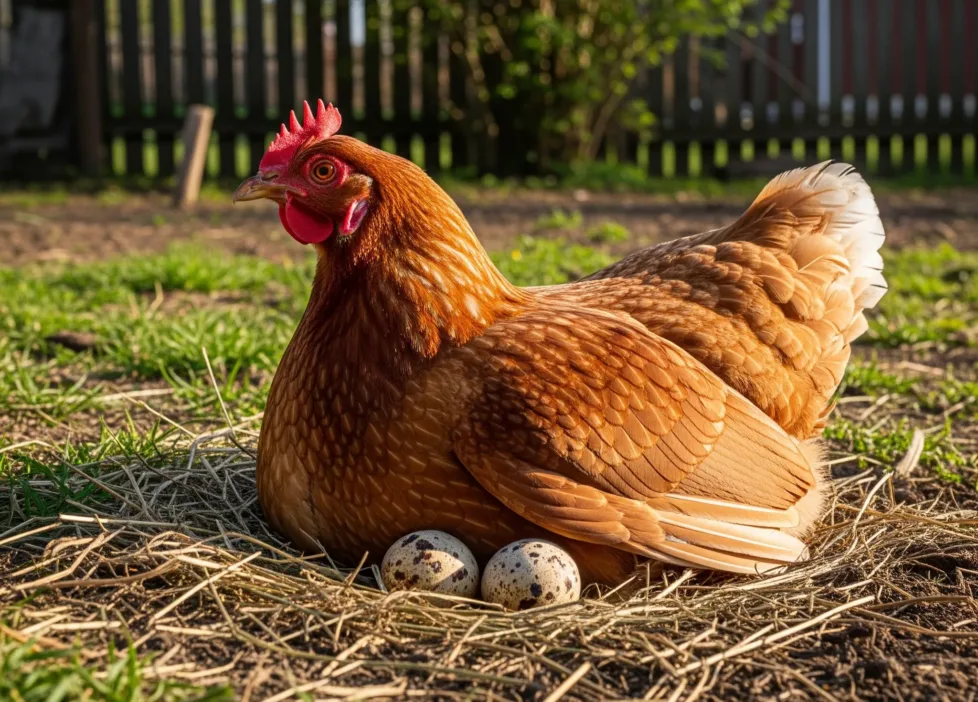If you’re thinking about raising chickens in your backyard, one of the first questions that likely comes to mind is: How many eggs will I get each week? Understanding what to expect in egg production helps you plan your flock size, manage feeding costs, and avoid over- or under-supplying your household with fresh eggs.
In this guide, we’ll break down exactly how many eggs backyard chickens lay per week, what factors affect egg production, and which breeds are best for reliable laying in small flocks.
Average Eggs Per Chicken Per Week
A healthy, mature hen typically lays 4 to 6 eggs per week, depending on her breed, age, and environment.
That means a small flock of 3 to 5 chickens can easily produce a dozen or more eggs every week, enough to feed most families. However, not all chickens lay at the same rate, and egg production naturally fluctuates throughout the year.
What Affects How Many Eggs Chickens Lay?
1. Breed
Some chickens are bred for egg production, while others are dual-purpose or ornamental. Choosing a high-production breed is key if your main goal is a steady egg supply.
2. Age of the Hen
Most hens start laying around 18–22 weeks of age. Peak production occurs in the first 1–2 years. After that, egg laying slowly declines.
3. Season and Daylight
Hens lay fewer eggs in winter due to shorter daylight hours. Chickens typically need 14–16 hours of light daily to lay consistently. Supplemental coop lighting can help maintain production during colder months.
4. Nutrition
A well-balanced layer feed with enough protein (16–18%), calcium (for shells), and fresh water ensures reliable egg laying. Poor nutrition leads to lower production and brittle eggs.
5. Stress and Environment
Changes in routine, predator scares, poor ventilation, overcrowding, and sudden temperature drops can reduce laying. Clean, quiet coops and regular routines help chickens stay productive.
6. Molting
Once a year, chickens shed their feathers and focus energy on regrowth instead of laying. During this 6–8 week period, egg production may stop entirely.
Weekly Egg Production Examples (By Flock Size)
Here’s a look at what you can expect on average:
| Flock Size | Avg Eggs/Week |
| 2 hens | 8–12 eggs |
| 4 hens | 16–24 eggs |
| 6 hens | 24–36 eggs |
| 10 hens | 40–60 eggs |
Actual results depend on breed, time of year, and hen age, but this gives you a realistic estimate.
How to Increase Egg Production (Naturally)
If you want more eggs from your backyard hens, here are a few tips:
- Choose high-laying breeds like Leghorns, Australorps, or Rhode Island Reds
- Offer a consistent, high-quality layer feed
- Ensure 14–16 hours of light each day (especially in winter)
- Keep stress low by avoiding overcrowding and loud disturbances
- Provide oyster shell for calcium and grit for digestion
- Use clean nesting boxes to encourage laying behavior
- Keep water clean, cool, and accessible at all times
What to Expect Through the Year
Egg laying isn’t consistent year-round. Here’s a general seasonal pattern:
- Spring to Early Summer: Peak laying time
- Late Summer: Possible slowdown during molt
- Fall: Gradual decline as days shorten
- Winter: Minimal laying unless supplemental lighting is used
Planning your flock size around seasonal variation helps you avoid both shortages and surpluses.
Final Thoughts
So how many eggs do backyard chickens lay per week? On average, 4 to 6 eggs per hen is a realistic expectation during peak seasons. The total depends on breed, care, and the time of year.
For most families, a small flock of 4 to 6 hens is enough to supply a steady dozen to two dozen eggs per week. With the right environment and breed selection, backyard chickens can provide fresh eggs and rewarding routines year-round.



